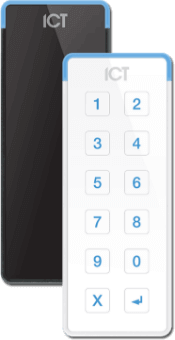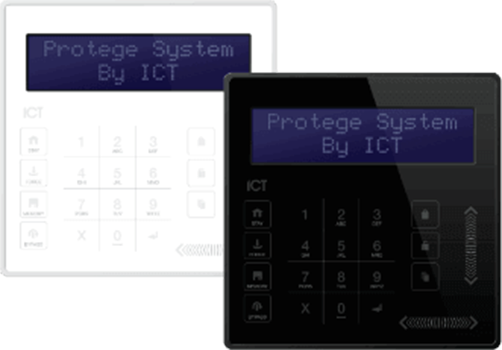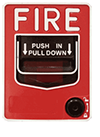Video MGMT System
 Access Control
Access Control
Voice & Data Wiring
 Burglar Alarm
Burglar Alarm
 Fire Alarm
Fire Alarm
Video MGMT System
Voice & Data Wiring
Too busy to read? Here’s a summary:
The market for advanced security solutions, particularly electronic access control, has rapidly expanded in recent years. But with so many options available in 2023, how do you determine which type is the best fit for your needs?
Keep reading this guide for a better understanding of your access control options and actionable insights that will help you make informed security decisions now and in the future.
With many access control systems to choose from, a great place to start selecting the right system for your organization is by looking for specific features. We’ve broken down the top access control features available and have placed them into two categories: features most often used for commercial installations and features most often used for industrial settings.
Visitor Management Tools: Commercial buildings often have a mix of permanent employees and temporary visitors. Many access control systems differentiate between individuals or roles, granting appropriate access levels. For example, while an employee might have access to most areas, a visitor might only be allowed in specific zones.
Multiple Entry Points and Access Levels: Commercial buildings, especially multi-story ones, might have multiple entry points like main entrances, service entries, and emergency exits. Each of these points might require different access levels.
Integration with Other Systems: Commercial buildings often have other security and building management systems in place, such as surveillance cameras, fire alarms, and HVAC systems. The access control system should integrate seamlessly with these systems.
Aesthetic Considerations: In commercial settings, especially in high-end offices or customer-facing environments, the aesthetics of access control devices can be crucial. Sleek, modern designs that blend with the building's architecture might be preferred.
High-Security Zones: Industrial complexes often house sensitive machinery, hazardous materials, and proprietary processes. These areas require heightened security, with access limited to only a few authorized personnel.
Safety Protocols: In industrial settings, safety is paramount. The access control system should be able to integrate with safety protocols, ensuring, for example, that only trained personnel can enter areas with hazardous materials.
Durability: Given the often harsh environments in industrial complexes, access control devices need to be more robust and durable, resistant to factors like dust, moisture, and extreme temperatures.
Large Perimeter Management: Industrial complexes often span vast areas, with multiple points of entry and exit, including large access gate control for vehicles. The access control system should be capable of managing these vast perimeters effectively.
Shift Management: Industrial complexes often operate in shifts. The access control system might need to accommodate shift timings, ensuring personnel can access the complex during their designated hours and restricting access outside of those times. Contactless access control credential systems are often recommended to prevent long lines in high-traffic areas during shift changes.
Here's a step-by-step guide to help you navigate the factors to consider before investing in an access control system:
Before diving into the technicalities, take a moment to reflect on your primary security needs. For example, the access control needs of commercial buildings are often different from those of large industrial complexes.
Familiarize yourself with the various types of access control systems on the market. From card-based systems to biometric solutions, each has its pros and cons.
In an interconnected world, your access control system should seamlessly integrate with other security systems, such as those for threat detection and video surveillance.
While it's crucial to invest in a robust system, it's important to make sure your system aligns with your budget. The most expensive and feature-heavy options aren’t necessarily the best suited to your site’s security needs.
Opt for a system that is scalable and can adapt to future technological advancements. Open-source IP (Internet protocol) access control systems are highly recommended for being future-proof and scalable.
Access control systems can be categorized in the following ways:
These are the most common types, where users are provided with magnetic stripe cards or RFID (radio-frequency identification) proximity cards to gain access. They're cost-effective and suitable for medium to large establishments.
A step up in terms of security, biometric systems require physical attributes like fingerprints, retina scans, or facial recognition. They're ideal for high-security areas.
With the widespread adoption of smartphones, mobile-based access control systems are gaining traction. They utilize Bluetooth or NFC signal communication for access control authentication.
These systems combine the features of two or more credential types to offer enhanced security and flexibility.
The most reliable access control systems require two or more separate credentials for authentication. For example, an access reader may require facial recognition, Bluetooth signal authentication, and entry of a PIN on a keypad before continuing the entry process.
When choosing an access control system, be sure to assess your requirements, understand the different types of access control available, and consider factors like scalability and ease of integration. Choosing the right electronic access control system type can be daunting, but our team has the technical knowledge to make it a breeze.
For assistance selecting and implementing access control and other security systems at your property, reach out to the experts at Mammoth Security by filling out the simple form below.
NOT COMPLETELY SURE?
860-748-4292For offices, a combination of card-based and mobile-based systems can be ideal, offering a balance between security and convenience.
It's recommended to update access control software at least once every six months. Hardware updates, on the other hand, might be needed less frequently, perhaps every 2-3 years.
While biometric systems offer enhanced security, it's essential to ensure that the data is stored securely to prevent any potential breaches and privacy violations.
Yes, most modern systems offer integration capabilities with surveillance cameras, alarm systems, and more.
With regular maintenance, a quality access control system can last anywhere from 5 to 10 years.
Hybrid systems offer the best of both worlds and can be a good investment if you're looking for flexibility and enhanced security.